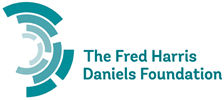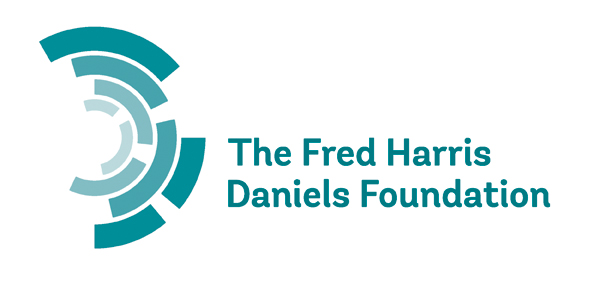24 Sep September 2017 Newsletter
The Daniels Clan and the Norton Company
When founded In 1949, some of the funds that were used as the core of the foundation, undoubtedly, came from Norton Company stock certificates.
In 1885 seven business men in Worcester formed Norton Company, to manufacture abrasive grinding wheels. Fred H Daniels, 32 years old and recently married, was one of the seven.
Frank Norton had patented the concept of an abrasive grinding wheel and it was this newly formed company that began production of this innovation.
Within 20 years, Norton would grow to a multinational company with European plants and become one of the 400 largest companies in the US.
Norton was tightly run by the sons and grandsons of the founders from the 1885 thru the 1990s, until it was purchased by the French multinational Saint-Gobain.
The stock holdings of Norton formed the basis of the founding family’s wealth, Fred Harris Daniels’ wealth and a portion of original funding of the Fred Harris Daniels Foundation.
Clarence White Daniels and Dwight Clarke Daniels (g1) worked at Norton, with Clarence spending his entire career there, and sitting on the board for much of that time. His son, Uncle Dan (g2), likewise worked there and Bill Pettit III (g3) spent more than a decade selling Norton grinding wheels in the mid west.
Norton Company and the Daniels family – partnering for more than 130 years!
Board of Directors Votes to Support Worcester ACTs
Worcester ACTs is an early childhood trauma response that connects families with young children (under the age of 10) who have been exposed to violence with a coordinated support team. The Directors voted a grant of $20,000 towards the initial implementation of this program.
Worcester ACTs is unique in that it introduces a clinical response at the point of a trauma, as soon as possible after an incident involving police. Research has documented the strong relationship between exposure to violence between the ages of 0-9 and perpetration of serious violence as a young adult. The Worcester ACTs program will allow intervention to start before symptoms even have time to manifest in a child. There is robust evidence that intervening early can help to heal young children’s bodies and minds and strengthen families to reduce their exposure to ongoing violence.
Worcester ACTs is a partnership among Worcester Police Department(WPD), YWCA, Community Healthlink, UMass Medical Child Trauma Training Center, UMass Memorial Child Protection Program, Center for Health Impact, Worcester’s Division of Public Health, and Clark University. Worcester ACTs is a core component of Worcester’s larger Youth Violence Prevention Initiative (WYVPI) as well as the city’s Community Health Improvement Plan (CHIP).
Worcester Youth Violence Prevention Initiative | City of Worcester, MA
www.worcesterma.gov/announcements/worcester-youth-violence-prevention-initiative
The Worcester Youth Violence Prevention Initiative (WYVPI) is the result of a comprehensive youth violence assessment and citywide strategic planning process that engaged hundreds of youth, adult residents and other stakeholders from fall 2013 through spring 2015 conducted by Clark University professors Laurie Ross, Ellen Foley, and their students in graduate and undergraduate courses. The WYVPI, led by the Mayor and City Manager of Worcester consists of over 70 organizations and involves over 150 individuals across the city. Worcester ACTs is a major priority of WYVPI and will receive a great deal of attention by city leadership.
Foundation supports Worcester Historical Museum with a capital grant
In September of 2015, the Worcester Historical Museum (WHM) approached the Fred Harris Daniels foundation for a grant in support of their $12,500,000 capital campaign. The directors voted to approve a grant of $225,000 over five years in support of creating an “inviting, accessible entrance from the parking lot at the back of the museum,” thereby creating greater and easier accessibility to people of all ages and needs.
Daniels Foundation has provided ongoing support to WHM in recognition of their role as a unique resource in the community, blending ethnic and cultural history, genealogy and personal history, while preserving the extraordinary record of Worcester’s contributions to the worlds of science and technology. The Museum honors Worcester’s legacy of community development, cultural diversity, innovation, and invention through changing exhibits, education programs, and community outreach.
Daniels Foundation values and supports collaboration between non-profits, and the WHM uses collaboration to create a multi-dimensional or multi-disciplinary approach to presenting history. The Museum works in partnership with the Worcester Public Schools, Worcester Public Library, Worcester Women’s History Project, Broad Meadow Brook Conservation Center, Ecotarium, The Hanover Theatre, The Latino History Project, Preservation Worcester, Worcester Art Museum, and several area colleges and universities.
G4 Fund
We currently have two grant programs running and have now chosen our third to fund: The Pernet’s Youth Services Program.
Their program works in Worcester’s Green Island neighborhood with children from 13 to 18 years old. They run four youth service programs: Homework Club, Reading Club, Youth Group, and Summer Youth Jobs. Last year, this program helped 42 youths improve their grades (98%), graduate to the next grade level (100%), demonstrate good social behavior and share those practices with their family and friends (90%), and log park clean up job hours (1,265 hrs). This program has even more kids signing up for the coming year and we are excited to help fund them. We have had an update from Luk and though the start of the year had a rocky beginning, they have formed a plan that is helping to stabilize the PLOT program. The director, Maurie, and I had a phone conversation to go over the developments and plans after hearing that they lost their coordinator and were down to one Peer Leader. They have officially hired a new coordinator and he is part time, but his full role is this running this program, which is different from the previous coordinator. He comes with experience running and developing curriculums and enthusiasm for street outreach.
They had the teen count in May and thought that will be a good place to look for new Peers for the next fiscal year. The PLOT program is still running with one Peer and he has coordinated with the public library to complete the educational part of the program. They are still hopeful that the Outreach grant will be restored in October, but they can keep making this program work without it.
We have also had a review from Worcester HEARS as they head into their 2nd school year instituting the MindUp curriculum. At the end of the first school year 93% of the teachers from their 4 target schools (City View, Grafton Street, Rice Square, and Roosevelt) are using the training at least one day a week. Across these four schools, the program reaches 1,475 Students and 132 teachers and they are adding the East Middle school in this school year which adds 816 students and 58 teachers into the curriculum. The program is also being shared with Recreation Worcester to be incorporated into their free afterschool and summer programs.
Interview with Hal Rubin of Salem Capital Management
Hal has been the Foundation’s Investment Advisor going back to the early 2000’s.
- How did you get your start in the world of investing? I was interested in investing while I was in college, at Union College, and I worked for two summers at a brokerage firm in New York. I got a job with them right out of college as an analyst. I was doing research with their institutional and retail department, for 6 years, and then I moved to Boston. I worked there for Drexel Harriman Ripley, where we were selling high grade research to the mutual fund industry in Boston. After that I joined Loomis Sayles as portfolio manager, where I was for ten years. And, that’s when I formed Salem Capital Management.
- So you’ve always been on the research side of the equation, never a day trader or anything like that. Right, I have always been on the research side or the marketing side.
- When did you establish Salem Capital? What are the firm’s primary guiding principles? We started Salem in 1990. The first principle is that the client comes first, and the second is to provide a good return for a reasonable fee. I think our fees are probably low in comparison to the industry. Generally we deal with investment names that most people would recognize, mostly large cap stocks.
- What’s different about managing an institutional portfolio versus a personal portfolio? Taxes. That more than anything else. We maintain a number of large IRA’s and other accounts like the Daniels Foundation, and if you look at them their holdings are typically the same. Of course, in these kinds of tax advantaged accounts the demands on the holding period are non-existent. When you get individuals you have to factor the taxes in when selling the stocks, because if a stock rises 20% but you have to pay the taxes on the gain, have you really gained that much? So, there is a thought process about that. Our sophisticated personal clients tell us “don’t worry about the taxes”, but we always worry about the taxes.
- When you consider the Daniels Foundation, what challenges do you face as the investment advisor? One, performing well over a period of time. Number two, trying to keep the broad base committee informed on what we’re doing and how we’re doing it. I might say that this is the bigger task, because you have on that committee people who have a lot of experience and others with very little experience, and so we have to direct our comments when we have meetings to a mid level of experience in investments.
- As the next generation of Daniels begin to take over the foundation, what is the most important thing you believe they must understand about investing the portfolio? The long term nature of the market and how it has its ups and downs. You can have a good year and a bad year, but still a pretty good long term track record as long as you avoid major pitfalls. I think that getting a younger group to better understand the cycles involved in the market and the actual investment thought process would be probably very helpful. Perhaps we should have a periodic conference call with the G4 and let them know what were thinking, what our current investment parameters are, why we are cautions now or aggressive, and so on. Our current investment philosophy and what we are looking for.
- What is the most important thing they must understand about working with an investment advisor? Number one, you’ve always go to challenge the advisor’s thought process, and you’ve also got to give them enough freedom so they can take appropriate risks. They have to manage the portfolio without supervising it yourself. Not putting too many restrictions on the portfolio, such as industries or stocks which can’t be bought or must be bought. And, having an overall level of confidence in the skills of the individuals involved.
Thanks Hal!





Sorry, the comment form is closed at this time.